Climate Change Education: Equipping Students for a World on Fire
I’ll never forget the look in my student’s eyes. It was 2018, and we were discussing a news article about intensifying wildfires. Maria, usually vibrant and full of questions, was silent, staring out the window at a hazy sky. Finally, she turned to me and asked, with a quiet tremor in her voice, “So, is the world just… ending? What’s even the point of studying for a future that might not be there?”
Her question wasn’t born of teenage drama; it was a genuine, gut-wrenching response to the overwhelming and often terrifying information she was absorbing about our planet. It was in that moment I realized that teaching about climate change couldn’t just be a chapter in a science textbook. It had to be different. It had to be a lifeline.
This is the heart of true climate change education. It’s not about fear-mongering or presenting a doomed fate. It’s about moving beyond the headlines and the graphs to provide students with knowledge, agency, and hope. It’s about answering the unspoken question behind Maria’s eyes: “What can I do?”
This comprehensive guide delves into what modern, effective climate change education must encompass to prepare students not just for exams, but for life on a changing planet.
How to Apply for Study Abroad Programs in the USA 2025 Guide
Why “Just the Science” Isn’t Enough Anymore
For decades, the approach to climate in classrooms was siloed. Science teachers covered the greenhouse effect, perhaps a diagram of carbon cycles, and then moved on. This traditional model is dangerously insufficient today.
The students in our classrooms are part of a generation that has never known a stable climate. They are inheriting a problem they did not create, yet they are the ones who will face its most severe consequences. A 2021 study published in The Lancet revealed that over 60% of young people surveyed across ten countries felt “very” or “extremely” worried about climate change, with nearly half saying these feelings negatively impacted their daily lives.
This isn’t just an academic subject; it’s a psychological and existential reality for them. Therefore, effective climate change education must be interdisciplinary, socio-emotional, and action-oriented. It must address three core areas: the Head (the facts), the Heart (the emotional response), and the Hands (the capacity for action).
| Educational Approach | Focus | Outcome |
|---|---|---|
| Traditional Science-Only | Head (Knowledge) | Students understand the mechanism but feel disconnected and powerless. |
| Doom-and-Gloom Narrative | Heart (Fear) | Students become overwhelmed, anxious, and disengaged (eco-anxiety). |
| Modern Holistic Education | Head, Heart, & Hands | Students are knowledgeable, resilient, and empowered to be problem-solvers. |
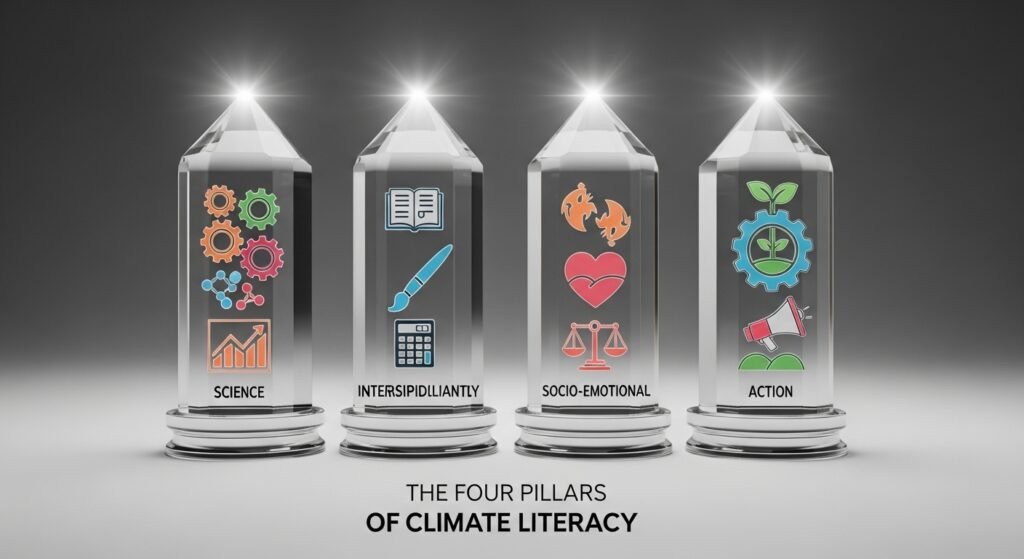
The Pillars of Effective Climate Change Education
So, what do students actually need to know? It’s a curriculum that weaves together multiple disciplines into a coherent and empowering narrative.
Pillar 1: The Unshakeable Foundation (The Science)
You can’t solve a problem you don’t understand. The foundation of climate change education must be a robust, evidence-based understanding of the climate system.
- The Basics: This isn’t just “earth getting warmer.” It’s about understanding the delicate balance of the atmosphere, the carbon cycle, and the greenhouse effect—a natural process that human activities have radically accelerated.
- The Evidence: Students should explore how scientists know what they know. This includes analyzing data from NASA and the IPCC on global temperature rise, shrinking ice sheets, ocean acidification, and the increasing frequency of extreme weather events.
- Systems Thinking: Climate change isn’t a single issue. It’s a “threat multiplier.” Educators need to show the interconnectedness: how a warming ocean affects fisheries, which impacts food security, which can contribute to migration and geopolitical instability.
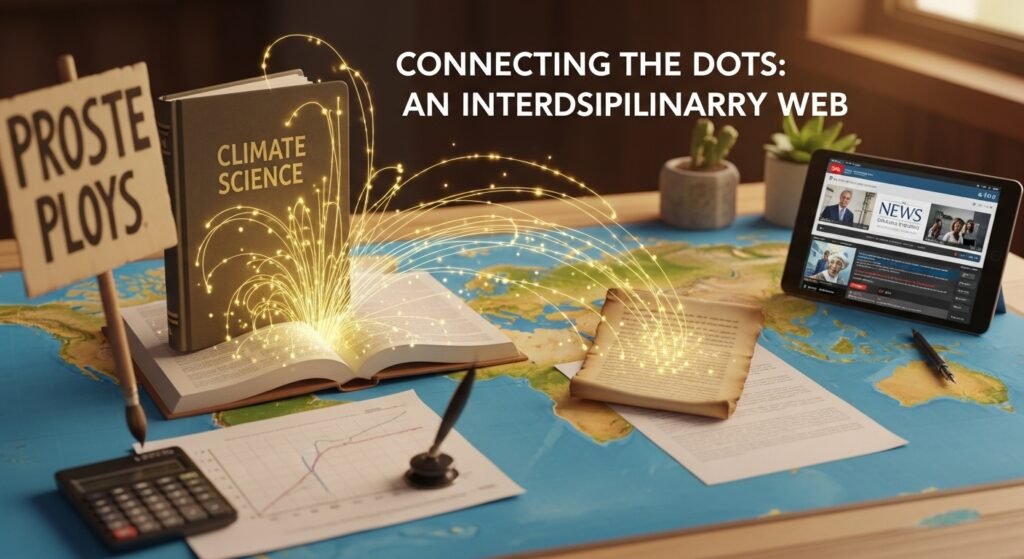
Pillar 2: Connecting the Dots (The Interdisciplinary Web)
This is where climate change education becomes truly engaging. The topic should be woven into virtually every subject.
- Social Studies & History: Examine the industrial revolution’s role, the principle of “common but differentiated responsibilities” between nations, and the ethics of climate justice. Why are the most vulnerable communities often the least responsible?
- English Language Arts: Analyze climate rhetoric—from scientific reports to political speeches and media headlines. Read climate fiction (“cli-fi”) and write persuasive letters to local representatives or op-eds for the school paper.
- Math: Calculate carbon footprints, model data trends of atmospheric CO2 from the Mauna Loa observatory, and analyze the cost-benefit ratios of different energy sources.
- Economics: Debate policy tools like carbon taxes and cap-and-trade systems. Explore the rise of the green economy and sustainable business models.
- Art & Music: Channel emotions and messages through powerful visual art, documentaries, and music. Art can communicate the urgency and beauty of what’s at stake in ways raw data cannot.
How to Apply for Study Abroad Programs in the USA 2025 Guide
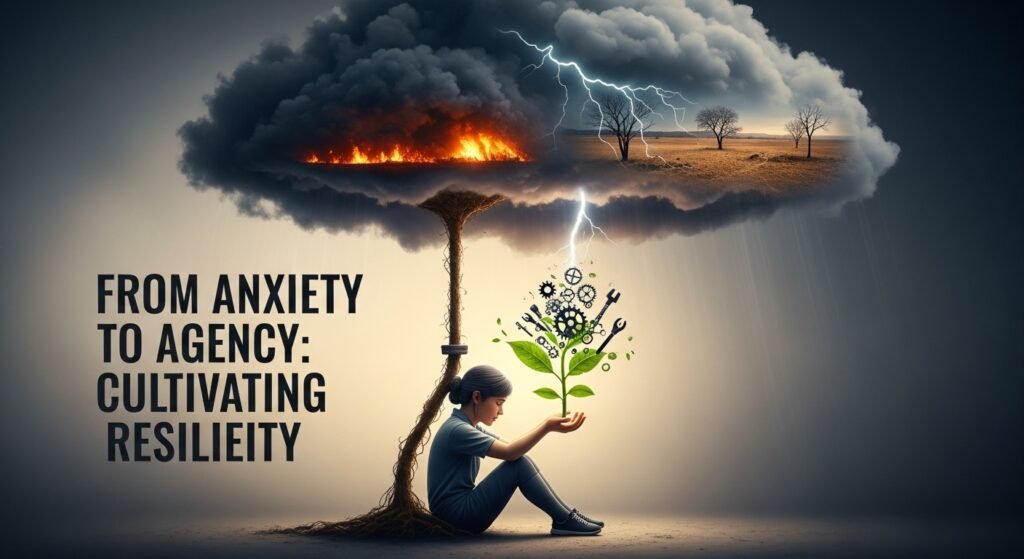
Pillar 3: Cultivating Resilience (The Socio-Emotional Core)
Ignoring the emotional weight of the climate crisis is educational malpractice. Climate change education must include tools for processing eco-anxiety and building resilience.
- Validate Feelings: Teachers must create a safe space for students to express fear, anger, sadness, and frustration. Normalizing these feelings is the first step to managing them.
- Focus on Agency: Anxiety often stems from a feeling of powerlessness. The antidote is action. Shift the narrative from “What a huge, hopeless problem” to “Here’s how we can be part of the solution.”
- Highlight Heroes: Share stories of innovators, activists, scientists, and communities worldwide who are making a difference. This provides hopeful role models and proves that change is possible.
Pillar 4: The Tools for Action (The Solutions and Citizenship)
This is the most critical pillar. The ultimate goal of climate change education is to create empowered, engaged citizens.
- Mitigation vs. Adaptation: Students should understand the two-pronged approach: Mitigation (reducing emissions to slow climate change through renewable energy, conservation, etc.) and Adaptation (preparing for and adjusting to the changes already underway, like building sea walls or developing drought-resistant crops).
- Critical Thinking & Media Literacy: In a world of misinformation, students must become savvy consumers of information. Who is funding this study? What is the source of this graph? Teaching them to identify reliable sources is crucial.
- Civic Engagement: This is the practical application. Climate change education should teach students how to advocate for change: how to contact elected officials, how to organize a community event, how to use social media for awareness, and how to make sustainable consumer choices.
- Green Skills: Introduce students to the growing fields of renewable energy engineering, sustainable agriculture, climate law, and urban planning. Framing this as a career opportunity empowers them to see themselves as the solution-builders of tomorrow.
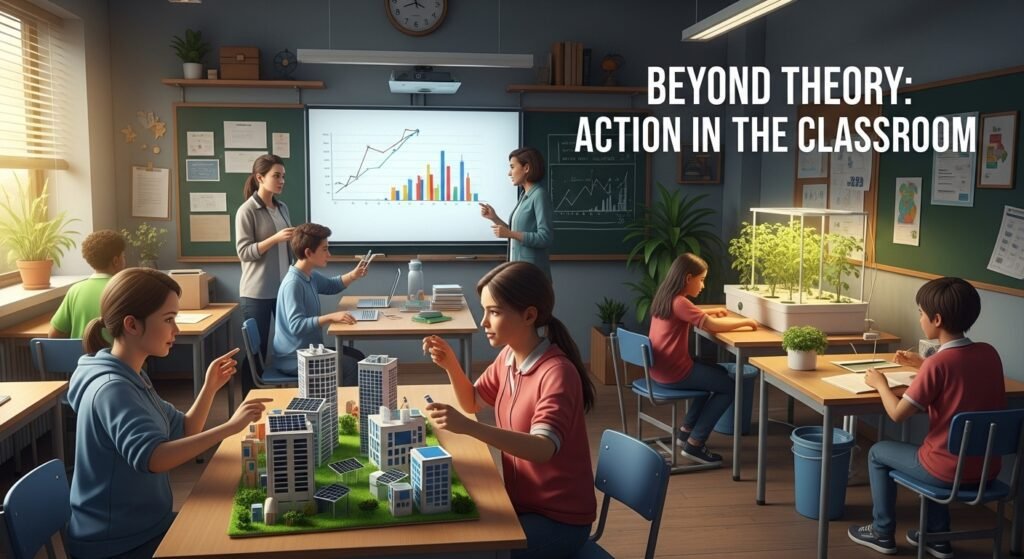
What This Looks Like in a Real Classroom: Beyond the Theory
This isn’t just theoretical. In my own classroom, we moved beyond the textbook:
- We conducted an energy audit of our school and presented a cost-saving, emissions-reducing plan to the principal.
- We held a “mock COP” summit where students represented different nations and negotiated emissions targets, grappling with real-world issues of equity and economics.
- We started a native plant garden to support local pollinators and reduce the heat island effect on school grounds.
The transformation in students like Maria was profound. The anxiety didn’t vanish, but it was channeled. She went from feeling like a passive victim to an active participant. She found her point of agency—for her, it was in community organizing.
How to Start Online Tutoring in 2025 — Earn from Home
The Challenge Ahead: Implementing Equitable Education
The ideal of holistic climate change education faces hurdles. Many teachers feel underprepared and need professional development and quality curricula. Resources must be equitable so that a school in a under-resourced community has the same access to hands-on learning tools as one in a wealthy district.
Furthermore, the topic can be politically charged in some areas. Educators need support and protection to teach evidence-based science without censorship.
A Call to Learn, Feel, and Act
Climate change education is not an optional add-on. It is a fundamental literacy for the 21st century. It’s about giving our students the tools to understand the world they live in, to process their feelings about it, and to roll up their sleeves and work towards a more sustainable and just future.
It’s about replacing the hollow question, “What’s the point?” with a powerful declaration: “I am the point.”
What does climate change education look like in your community? Share your experiences, resources, or questions in the comments below. Let’s build a repository of hope and action together.

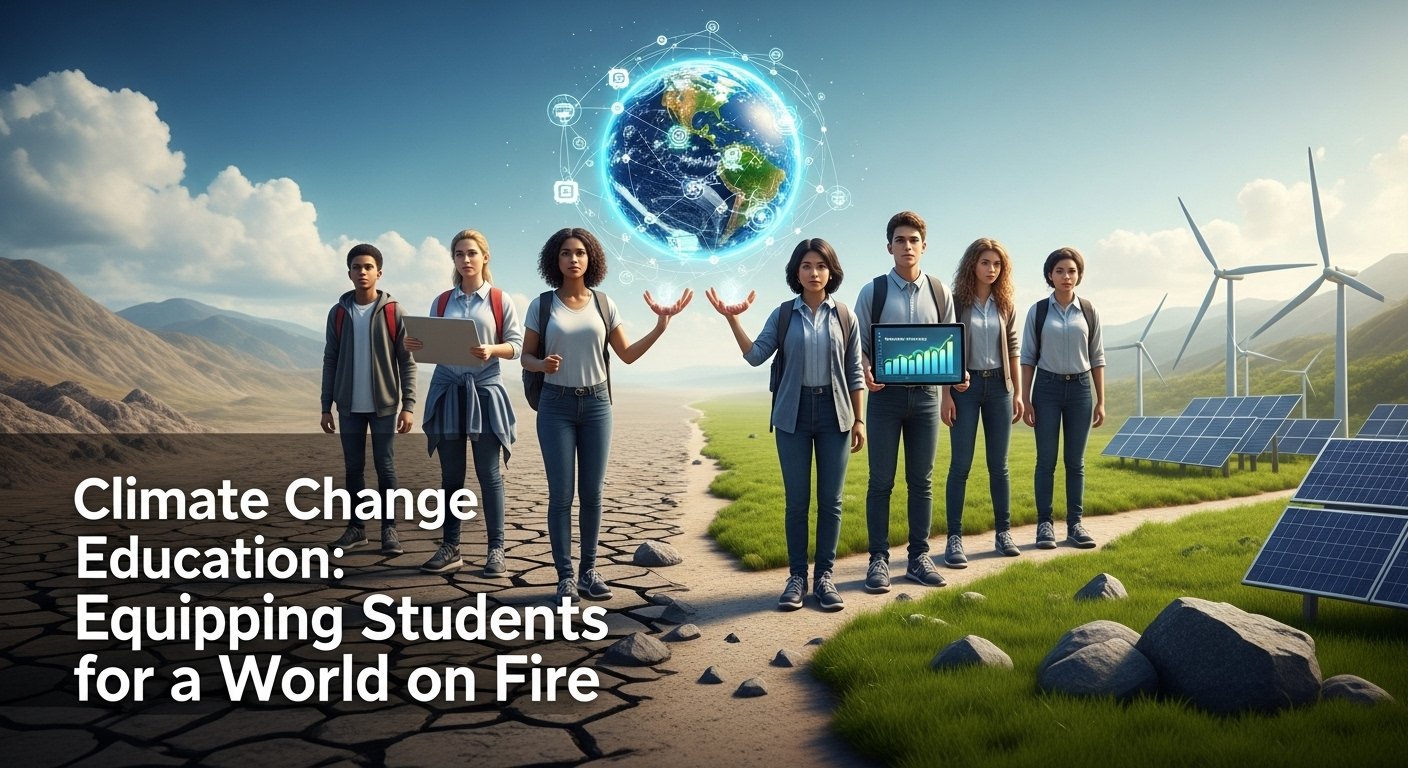


Pingback: Financial Literacy for Future of Work Young Adults - PaidScripts -Tech Education Hub: Courses & Student Resources